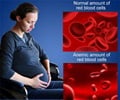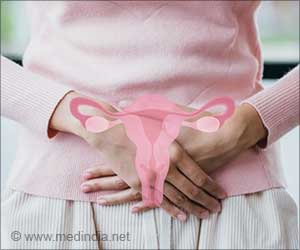Researchers find 109 chemicals in pregnant women, 55 of which are unknown

‘Researchers find 109 chemicals in pregnant women, 55 of which have unknown sources and uses.’
Read More..




"These chemicals have probably been in people for quite some time, but our technology is now helping us to identify more of them," said Tracey J. Woodruff, lead author. Read More..
"It is alarming that we keep seeing certain chemicals travel from pregnant women to their children, which means these chemicals can be with us for generations," she said.
The team used high-resolution mass spectrometry (HRMS) to identify man-made chemicals in people. The chemicals found are present in many different types of products. Findings showed that out of the 109 chemicals:
- 40 chemicals are used as plasticizers,
- 25 in consumer products,
Advertisement
- 29 as pharmaceuticals,
Advertisement
- 23 as pesticides and
- 7 are PFAS compounds used in carpeting, upholstery, etc.
The researchers also state that 55 of the 109 chemicals do not appear to have been previously reported in people.
- 1 is used as a pesticide
- 2 are PFASs used in manufacturing non-stick cookware and waterproof fabrics
- 10 are used as plasticizers in food packaging, paper plates, small appliances
- 2 are used in cosmetics
- 4 are high production volume (HPV) chemicals
- 37 have little to no information about their sources or uses
The scientists explain that although these chemicals can be somewhat identified via chemical libraries, they need to be compared with pure chemicals from manufacturers known as analytical standards to confirm. The issue is that manufacturers don’t always make these available.
Dimitri Panagopoulos Abrahamsson, co-lead author, said, "These new technologies are promising in enabling us to identify more chemicals in people, but our study findings also make clear that chemical manufacturers need to provide analytical standards so that we can confirm the presence of chemicals and evaluate their toxicity."
For instance, Solvay, a chemical manufacturer, recently stopped giving access to a chemical standard for perfluorooctanoic acid (PFAS) compounds being used as a replacement for phased-out PFAS compounds. The researchers had been using this standard to analyze the toxicity and presence of the replacement PFAS.
"It's very concerning that we are unable to identify the uses or sources of so many of these chemicals," Woodruff said. "EPA must do a better job of requiring the chemical industry to standardize its reporting of chemical compounds and uses. And they need to use their authority to ensure that we have adequate information to evaluate potential health harms and remove chemicals from the market that pose a risk."
Source-Medindia















